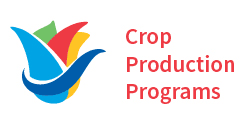
Bedding Plants Fertilizer Tips & Programs
Indicator plants include:
High pH Indicators: petunia, pansy, snaps, vinca
Low pH Indicators: geraniums, impatiens, marigold
High EC Indicators: pansy, snaps, vinca
Low EC Indicators: petunia, pansy
A commonly used soilless mix includes peat, perlite, vermiculite, starter charge and wetting agent. The media should provide enough porosity and drainage. The pH of the media should be between 5.8 – 6 for good nutrient availability. The EC should be maintained between 0.8- 1.2 mS/cm. The media should be moist when filling planting containers and care should be taken not to compact the soil.
Bedding plant fertilization is dependent upon the quality of the irrigation water being used. High concentrations of carbonates and bicarbonates will cause the pH of the media to rise during plant production. Water sources should be tested prior to deciding which fertilizer to apply. Plant Products can provide water tests to determine your alkalinity and water nutrient levels, as well as an ideal fertilizer program. Acid injection (usually sulfuric or nitric acid) is used when the bicarbonate level is above 250 ppm for growers who want a consistent feed program. When acid injection is used, Plant-Prod® Solutions 17-5-17 Complete or Fusion can be used as the general feed immediately upon planting rooted cuttings. Where Ca/Mg is low (Ca < 80ppm, Mg < 30ppm), use Plant-Prod® 12-2-14 Optimum every third time.
If acid injection is not an alternative, rotation between acidic blends and a Cal Mag formulation is suggested. The fertilizer analysis suggested would be determined by the water sample results, but in general the following guidelines apply:
Water alkalinity between 75-150 ppm CaCO3 with low Ca/Mg levels:
Use Plant-Prod Solutions 17-5-17 at 150-200 ppm N as a constant feed. Alternatively, use Plant-Prod 20-8-20 All Purpose High Nitrate at 150-200 ppm N as a constant feed. Every second or third time use Plant-Prod 14-0-14 Balance. Monitor EC and pH during the crop.
Water alkalinity between 150-200 ppm CaCO3:
Option 1 – If acid injection is not being used and the Ca/Mg levels are low, use Plant-Prod Solutions 19-8-13 Total Plus. Every third time, fertilize with Plant-Prod 12-2-14. If Ca/Mg levels are adequate, use Plant-Prod Solutions 18-9-18 pH Reducer or Plant-Prod 20-8-20. Monitor EC and pH during the crop.
Option 2 – If acid injection is being used and the Ca/Mg levels are low, use Plant-Prod Solutions 17-5-17 on a constant basis at 150-200 ppm N. Every third time, fertilize with Plant-Prod 12-2-14. If Ca/Mg levels are adequate, then use Plant-Prod 20-8-20. Monitor EC and pH during the crop.
Water alkalinity greater than 250 ppm CaCO3:
Option 1 – If acid injection is not being used and the Ca/Mg levels are low, use Plant-Prod Solutions 18-9-18 at 150-200 ppm N constant feed. Every third time, fertilize with Plant-Prod 12-2-14. If Ca/Mg levels are adequate, use Plant-Prod Solutions 18-9-18 at 150-200 ppm N
on a constant basis. Monitor EC and pH during the crop.
Option 2 – If acid injection is being used and the Ca/Mg levels are low, use Plant-Prod Solutions 19-8-13 at 150-200 ppm N constant feed. Every second time, fertilizer with Plant-Prod 12-2-14. If Ca/Mg levels are adequate, use Plant-Prod 20-8-20 at 150-200 ppm N constant feed. Monitor EC and pH.
In order to maintain plant quality during shipping and sale, fertilizer rates may be reduced 2 weeks prior to shipping, or when the buds are pea sized. Plant-Prod Solutions 15-0-20 No-Stretch® should be used at 100-150 ppm N in order to strengthen the stems and to provide supplemental micronutrients to keep the finished plants greener. If younger plants are in the same greenhouse, use Plant-Prod Solutions 15-0-20 as a part of the rotation with your regular feed program.

- Plant-Prod 12-2-14 Optimum Water Soluble Fertilizer
- Plant-Prod 14-0-14 Balance Water Soluble Fertilizer
- Plant-Prod 20-8-20 All Purpose High Nitrate Water Soluble Fertilizer
- Plant-Prod Solutions 15-0-20 No-Stretch® Water Soluble Fertilizer
- Plant-Prod Solutions 17-5-17 Complete Water Soluble Fertilizer
- Plant-Prod Solutions 17-5-17 Fusion Water Soluble Fertilizer
- Plant-Prod Solutions 18-9-18 pH Reducer Water Soluble Fertilizer
- Plant-Prod Solutions 19-8-13 Total Plus Water Soluble Fertilizer

